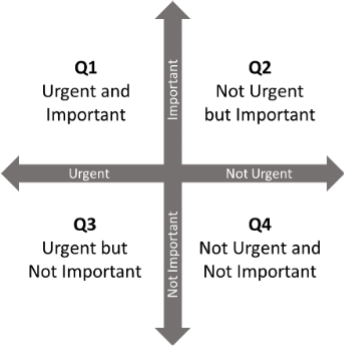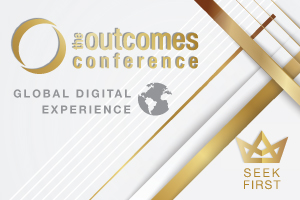
Creating Space for Preparation By Chris Jorgensen

The Intentional Creation of Space for Preparation
Creating space to plan and prepare is among the most essential actions every leader must pursue.
Many of us have likely heard about the four quadrants first contemplated by Dwight D. Eisenhower and formalized by Stephen Covey.
- Quadrant 1 – The Urgent and Important
- Quadrant 2 – Not Urgent but Important
- Quadrant 3 – Urgent but not Important
- Quadrant 4 – Not Urgent and Not Important

We know we should try to move from Quadrant 1 to Quadrant 2 regarding how we spend our time. We know we should ignore items in Quadrant 4 and minimize the impact of Quadrant 3 work that pulls us away from important work.
While many of us know this longstanding prioritization model, I wonder how many have recently assessed where we spend most of our time.
I fear that we have lost sight of why we’re prioritizing what we’re prioritizing and are treading water, overwhelmed to the point where we may not recognize the distinction between what is and is not truly important.
Compounding Impact of Preparation
What is easily overlooked is that our organizations’ ability to focus strategically on anything beyond the urgent relies heavily on the leaders within our organizations setting the tone.
Nehemiah is an excellent example of how personal preparation habits multiplied the collective success of the people he influenced in his leadership.
If you’re familiar with Nehemiah’s story, you know he exhibited tremendous courage by prayerfully relying on God throughout his leadership. What is just as obvious is Nehemiah’s ability to prepare. He was proactive, constantly preparing for what was ahead and what could stand in the way. When he saw potential roadblocks, he proactively worked to get in front of them.
Perhaps the most tangible example of Nehemiah’s preparation comes immediately after King Artaxerxes granted him permission to leave and help the Israelites. Instead of being satisfied, Nehemiah requested protection and provisions for his journey to Israel once he arrived. He had already thought through potential roadblocks and taken steps to help overcome obstacles right after being granted permission.
So how do we create more space for strategic thinking and the ability for us, and our organizations, to move intentionally to Quadrant 2?
Creating the Space
Perhaps the first step is to create an intentional space for preparation and strategic thinking for yourself. Creating rhythms, habits, and space for planning and preparation will look different for different leaders. Some leaders have a more challenging time creating space for preparation than others. The key is finding what works well for you and intentionally carving out the necessary space. Some leaders take the first 30 minutes of every day, others spend half a day a month away from the office intentionally thinking about more significant picture topics, and some take more extended vacations annually that allow them time for strategic thought away from the daily tasks.
Rest and Renewal
Creating the capacity to move more to Quadrant 2 also requires us to be rested and renewed and believe that we have the personal, mental, and emotional capacity to spend time there.
Nehemiah took many days to mourn, fast, and pray before he embarked on his leadership journey. These days were used to pray, seek wisdom, and discern the path forward, and they were also his time to prepare himself for the challenges ahead. It was a time of rest, renewal, and preparation.
Nehemiah was intentional about taking this pause; he did not just jump right in. We, too, must find ways to regularly renew ourselves to ensure we are bringing our best selves and can perform the hard work in Quadrant 2.
Create Organizational Capacity for Preparation
The true power of thoughtful preparation is fully realized when organizations develop a culture that allows for and encourages everyone to engage in it. Nehemiah’s example of preparation became engrained in the Israelites, and they collectively contributed to how the wall was rebuilt amidst opposition later in the book of Nehemiah.
This kind of culture is only possible if leaders set an example by taking time for preparation. If people on our teams are going to feel safe and willing to prepare, they need to see us make it a priority first.
When we set an example of focusing on the future, both on potential opportunities and roadblocks, our teams will also start to think the same way.
####
Chris Jorgensen helps Christian organizations maximize mission impact by creating and sustaining strategic focus through effectiveness assessments, strategic planning, and organization development services. He also authorizes The Nehemiah Blueprint, which explores essential leadership attributes to build lasting impact. To learn more, please visit www.convergentstrategy.com or email Chris at chris@convergentstrategy.com.

September 1 – October 31, 2024
Registration and Scholarship Applications close at midnight on August 26, 2024.
Don’t miss this extraordinary equipping event of the Fall Season!
LEARN MORE
“We were paying $400 a month with another payroll company. MinistryWorks gave us a price that was a fraction of that. I compared our existing plan with MinistryWorks, service for service, and found nothing lacking.”
Rick Voiles, Administrator,
Central Baptist Academy, Cincinnati, OH

What is Christian Leadership Alliance?
Christian Leadership Alliance equips and unites leaders to transform the world for Christ. We are the leaders of Christ-centered organizations who are dedicated to faithful stewardship for greater kingdom impact.




